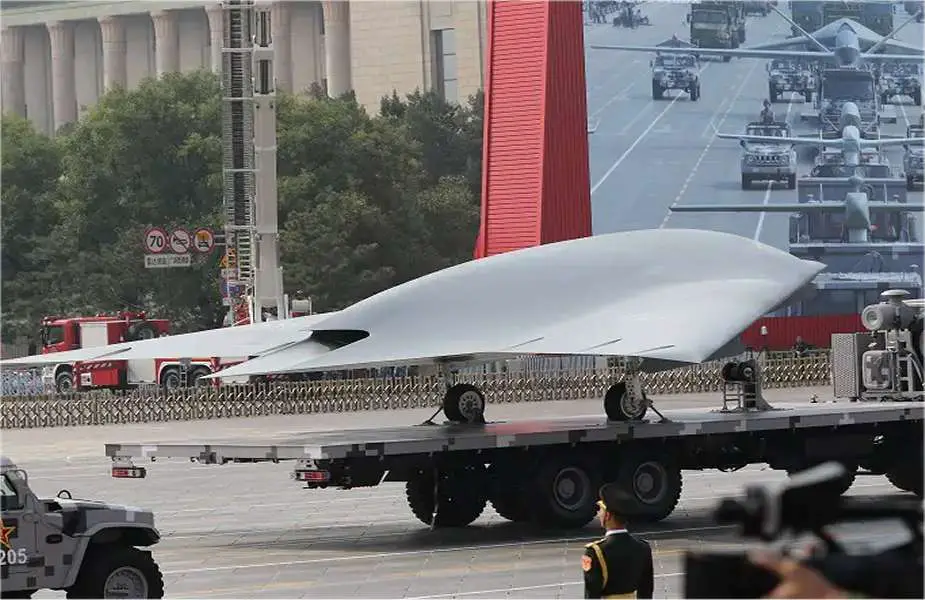Breaking news
China Gonji-11 UAV setting new standards in unmanned aerial operations.
The photos of the Chinese stealth drone Gonji-11 "Sharp Sword" circulating on social media underscores the growing interest in China's military technological advancements. This drone, known for its stealth capabilities and innovative design, has sparked widespread curiosity. Let's take this opportunity to recap the known technical capabilities of this UAV and the rare instances it has been sighted.
Follow Army Recognition on Google News at this link

China Gonji-11 Unmanned Aerial Vehicle (Picture source: Army Recognition)
The GJ-11 "Sharp Sword," a stealth drone developed by China, was first mentioned in May 2013, highlighting China's ambitions in stealth technology areas. It was publicly displayed during the military parade on National Day in October 2019, showcasing its integration into the People's Liberation Army for potential air superiority missions. At the Airshow China 2021, a scale model of the GJ-11 was exhibited, highlighting its offensive capabilities with internal weapon bays designed to carry precision-guided munitions. These key visibility stages of the GJ-11 illustrate China's progress in developing stealth drones for offensive and reconnaissance roles.
Jointly designed by the Shenyang Aircraft Design Institute, Shenyang Aerospace University, and the Hongdu Aviation Industry Group, the Gonji-11 (GJ-11) is the result of an unprecedented collaboration between academia and industry, stemming from the AVIC 601-S program. With its unique turbofan engine, flying wing design, and a wingspan of 14 meters, the Sharp Sword skillfully combines stealth technology with operational efficiency.
The stealth of the GJ-11 is not just a matter of shape but also of function. The released images show an aircraft whose design minimizes visibility to enemy radars, essential for reconnaissance missions and potentially combat. Its internal weapon bay and capability to carry up to two tons of payload attest to its offensive vocation, while its maximum takeoff weight of 10 tons and speed reaching up to 1000 km/h position it as a formidable actor in the 21st-century skies.
The GJ-11's combat radius of 1.2 thousand kilometers, coupled with its low radar visibility thanks to stealth technology, underscores China's ambition to possess a significant strategic asset capable of operating far behind enemy lines undetected. Its ability to autonomously take off from Type 075 amphibious assault ships also reveals valuable versatility for force projection and special operations.
The display of the GJ-11 at exhibitions like Airshow China 2021 has shed light on some of its capabilities, notably through scale models showing its internal weapon bays. These demonstrations materialize the offensive ambitions of this UCAV, capable of carrying a wide range of precision-guided munitions, thus challenging similar platforms primarily focused on reconnaissance.
However, despite the undeniable technological advances represented by the GJ-11, questions remain about its full operational capability, especially regarding the balance between stealth and payload capacity. Defense analysts continue to closely monitor the development of this device, aware of its potential to redefine the parameters of stealth aerial warfare.
The GJ-11 "Sharp Sword" represents a significant step in the evolution of UCAVs, combining stealth, offensive capability, and autonomy. While the details of its operational missions remain shrouded in mystery, its very existence signifies China's entry into a new era of aerial warfare, where discretion and firepower intertwine to form the weapons systems of the future.


























